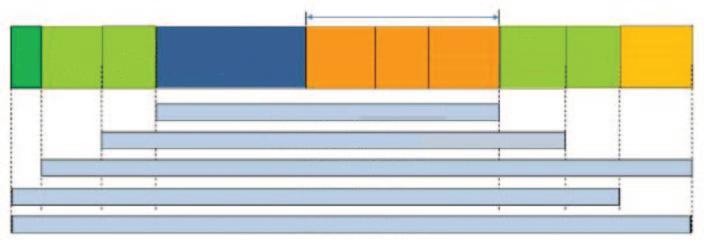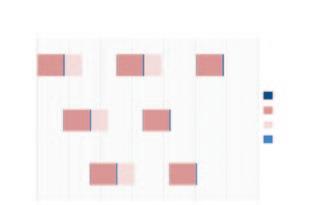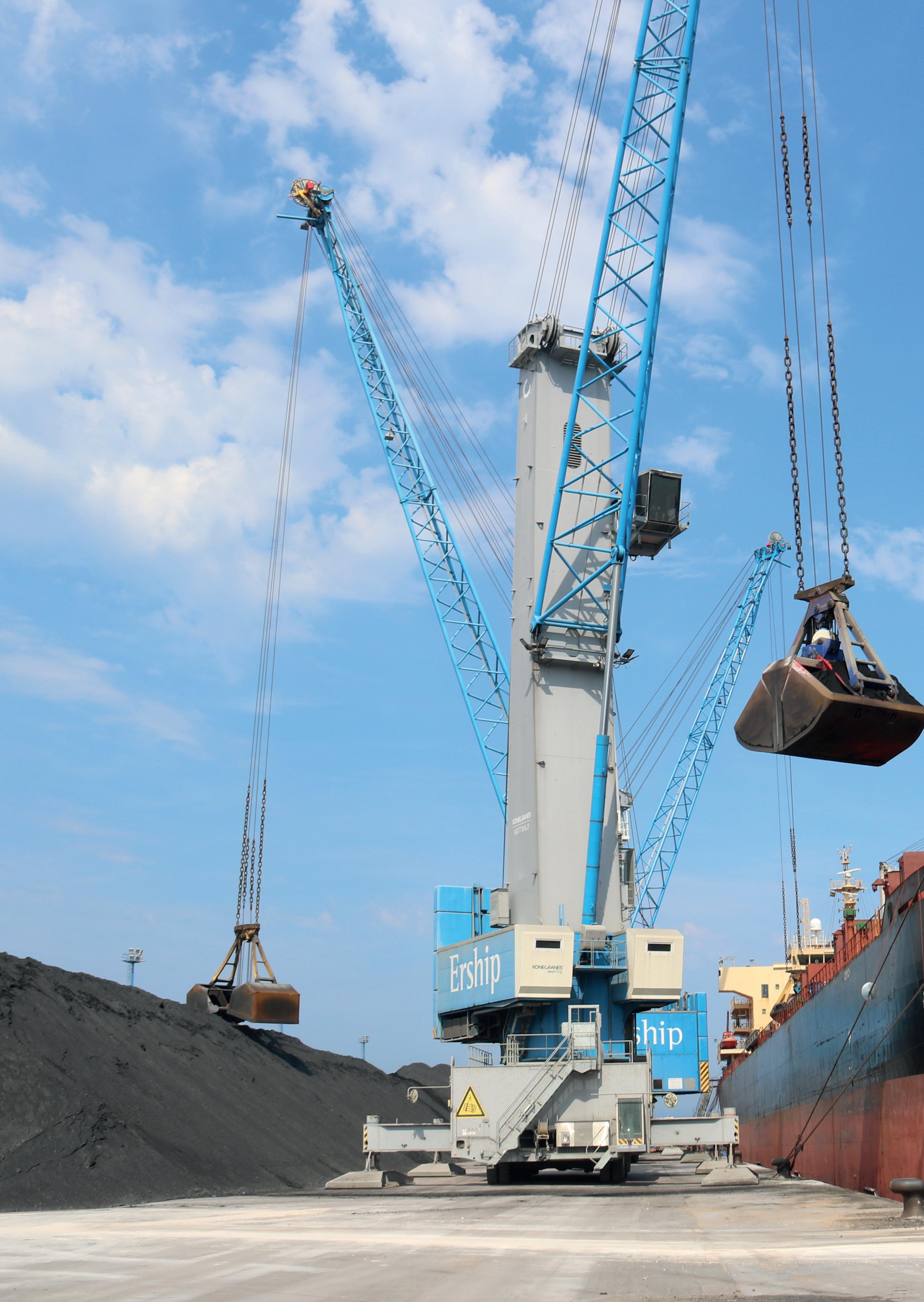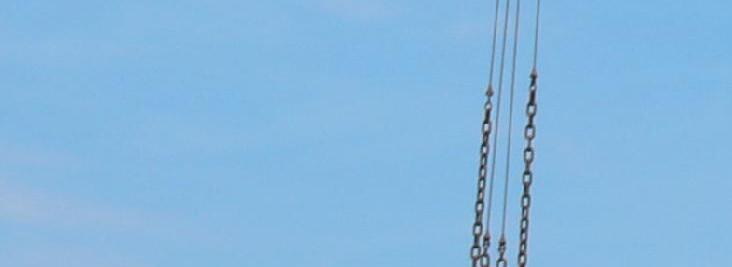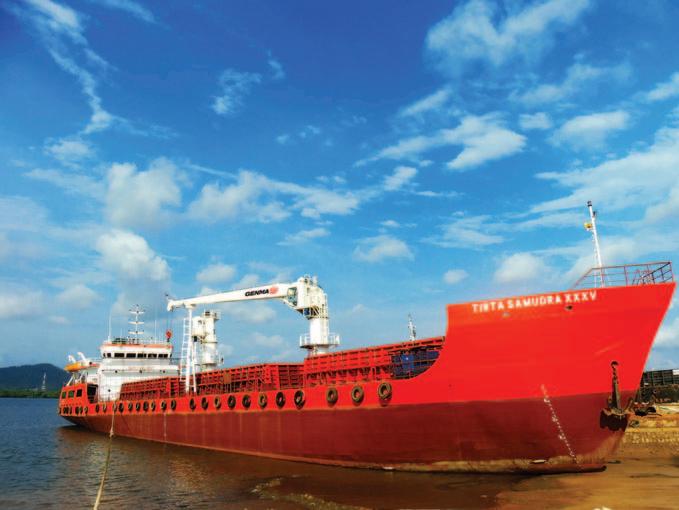
8 minute read
Introducing GENMA Marine Crane: flexible lifting solutions for ships
The GENMA brand is based on the strong financial strength of Nantong Rainbow Heavy Machinery Co., Ltd. (referred to as ‘RHM’, the parent company is Jiangsu Rainbow Heavy Industry Co., Ltd..). It is a resource sharing platform, a material handling brand integrating independent research and development, design, manufacturing, sales and service.
GENMA Marine Crane provides flexible and reliable lifting solutions for various types of ships, including container ships, bulk carriers, multi-purpose refrigerated cargo ships, tankers, and custom barges and transfer ships. It is mainly used for cargo loading and unloading at ports and wharfs, food supply, hose hoisting and other operations in sheltered waters.
The design and manufacture of the Marine Crane fully comply with ILO and specifications of relevant classification society, and can obtain product certificates from multiple classification societies such as ABS, DNV, BV, LR, CCS etc.
Deck Crane
The GENMA Deck Crane is designed with high efficiency, long lifespan and high reliability. It adopts electro-hydraulic drive, A-type boom, wire rope luffing, and 360° slewing. Its maximum lifting capacity is up to 350t, maximum working radius up to 36m, and can be customized according to user requirements.
The Deck Crane can be installed on the ship’s deck and is mainly used for handling operations in ports, wharfs and other work areas. The design and supporting parts of the deck crane can meet the requirements of high efficiency, smoothness and longterm reliability for cargo loading and unloading operations at wharfs. Optional features: double-body model, can be designed according to variable frequency motor drive and offshore crane standards.
OUTSTANDING PRODUCT FEATURES: short design cycle; v high work efficiency and fast speed v stepless speed regulation, smooth v movement; equipment and components are v installed inside the crane tower to effectively prevent corrosion in the humid marine environment; single-layer winch drum design to v extend the lifespan of wire rope; integrated hydraulic pump station; and v automatic anti-fault brake device, v standard ergonomic cab for comfortable operation environment.
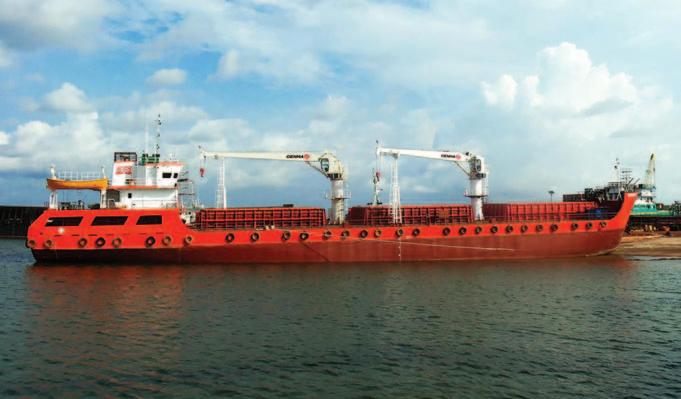
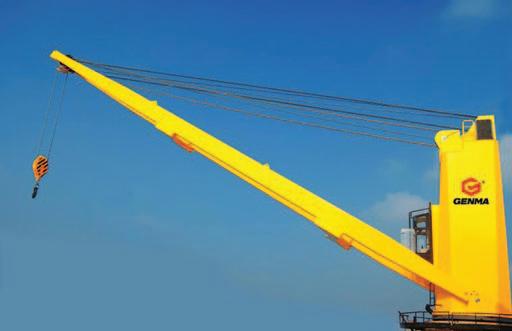
Deck Van Crane
The Deck Van Crane is designed with simplicity in mind, using motor-hydraulic drive, welded box-type boom, hydraulic cylinder luffing, 360° slewing. Its maximum lifting capacity reaches up to 200t, with essionProf b b b ompanies in more than nal c hhhihli ff
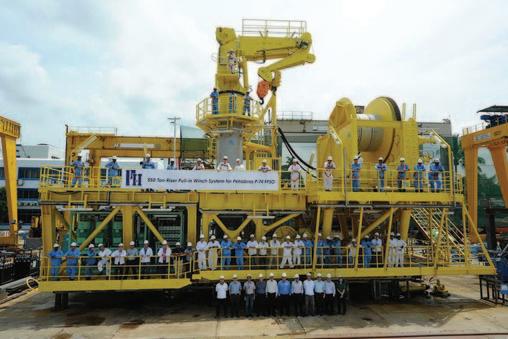




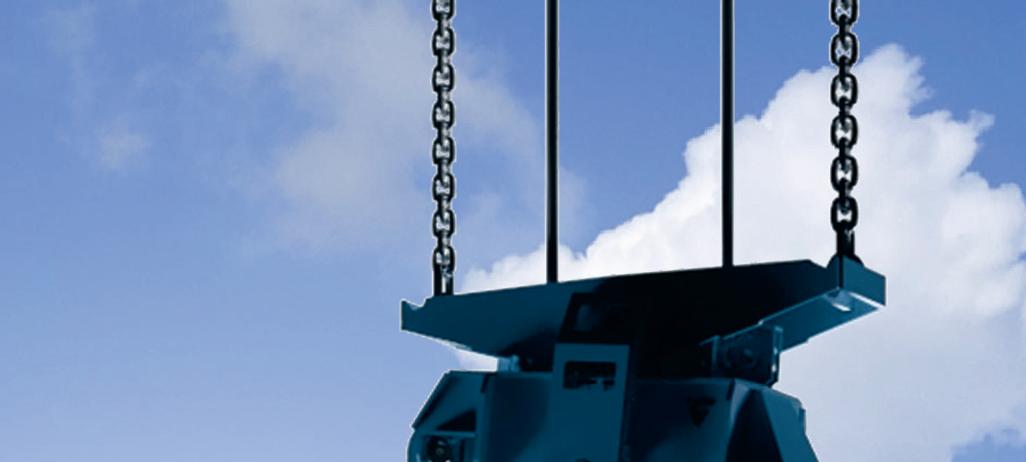
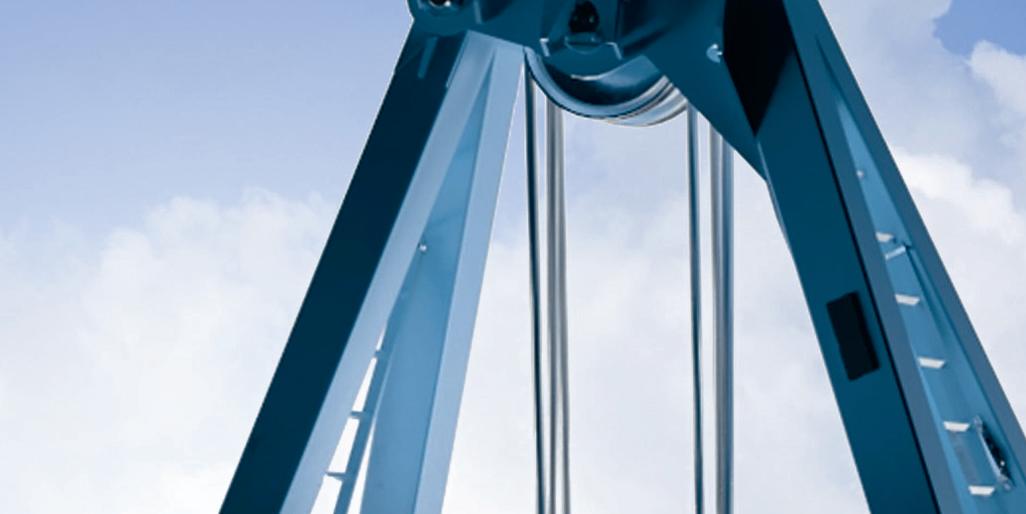
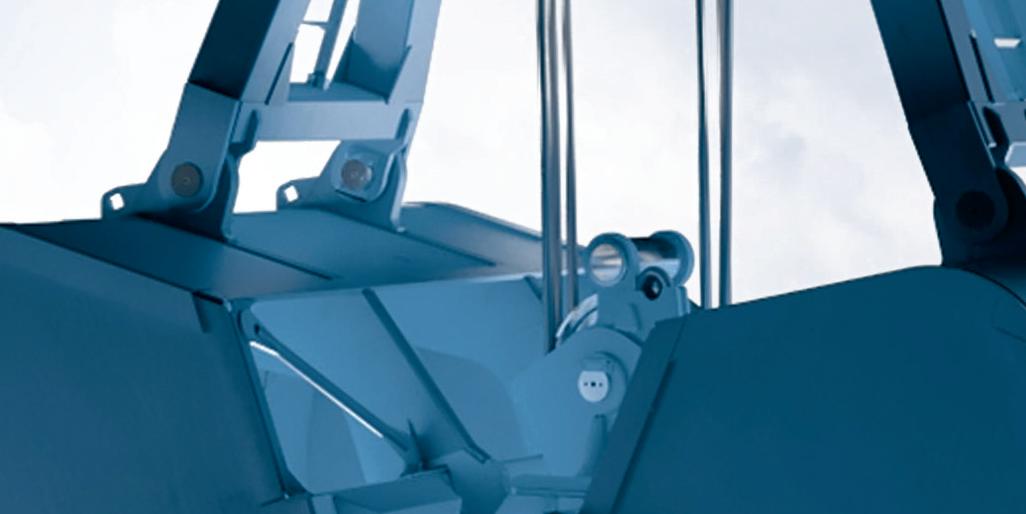


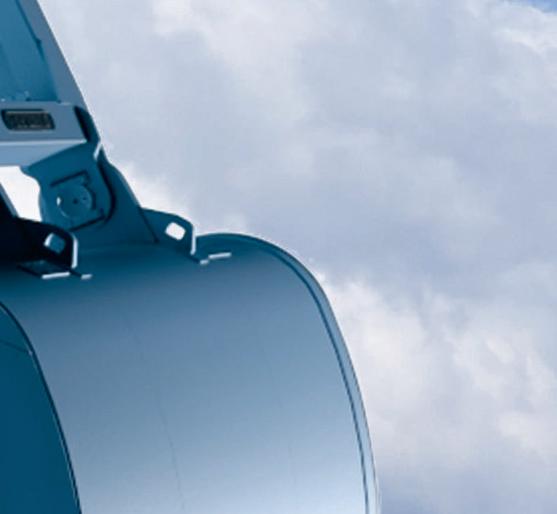



V erstegengrabs e Ve gen grabs, cause our grabs o best productivity. Combining our ext the feedback from our loyal custome materials and unloading situations. W orldwide w ountries w 110 c d bili ork with becauseourgrabso offerthemthehighestrelia er them the highest relia tensive knowledge and exp ers results in optimized gra We call this ‘Grab Intelligen ooking f L foorincreasedreliability and an extended lifespan? Let us know, b productivity, lower mainte because together we can m bilityand y and erience with bs f foorallbulk ce’. nance costs and ove mountains. maximum working radius up to 36m, and can be customized according to user requirements. The crane has a built-in independent hydraulic pump station powered by the ship’s power supply; hydraulic power can also be supplied by the ship’s central hydraulic system.



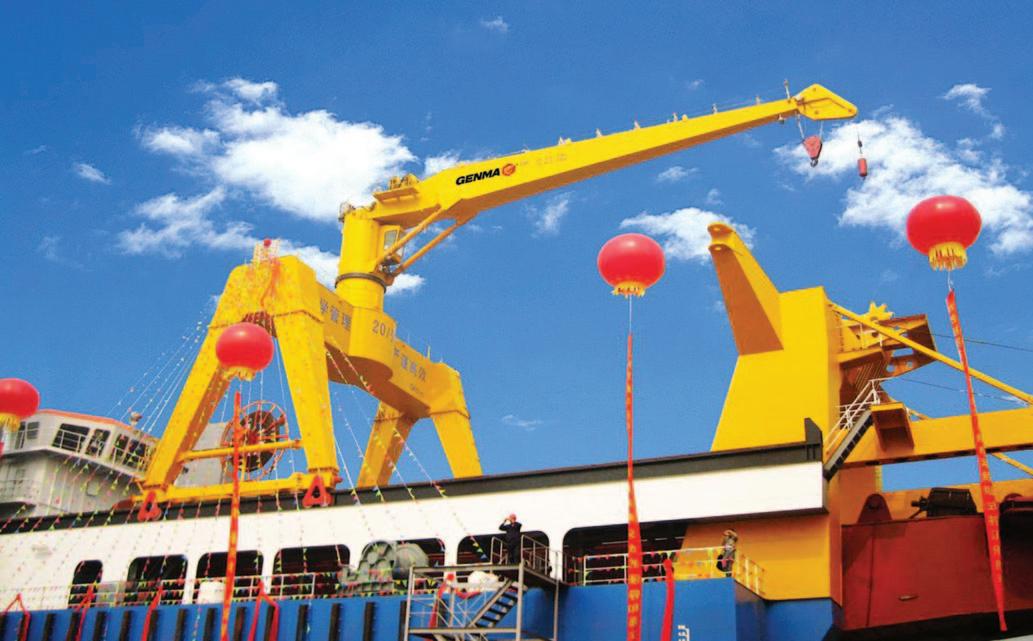
Optional features: Deck Knuckle Crane, Deck Telescopic Crane, travelling gantry. Can be designed according to offshore crane standards.
OUTSTANDING PRODUCT FEATURES: welded box-type boom, low v maintenance requirements, high stability and rigidity, accurate operation positioning; light weight and low centre of gravity; v simple structure, easy and convenient v maintenance; integrated hydraulic pump station; v stepless speed regulation, smooth v movement; and reliable operation. v
DECK KNUCKLE CRANE
The Deck Knuckle Crane adopts a welding box boom, hydraulic oil tank luffing and folding arms. It has low requirements for maintenance, high stability and rigidity precise operational positioning and space efficiency,etc. This model has four working mechanisms. which are elevation, luffing, rotation and arm bending. It can operate independently or collaboratively. All mechanisms have stepless speed control. It moves smoothly. It is safe and reliable. The integrated hydraulic pump station, can provide electric motor-hydraulic drive or diesel engine-hydraulic drive solution.
OUTSTANDING PRODUCT FEATURES: welded box-type boom, low v maintenance requirements, high stability and rigidity, accurate operation positioning; high space efficiency, light weight and v low centre of gravity; simple structure, easy and convenient v maintenance; integrated hydraulic pump station; v stepless speed regulation, smooth v movement; and reliable operation. v
GANTRY SLEWING CRANE
The Gantry Slewing Crane is designed with the aim of a large working area and high efficiency, using motor-hydraulic drive, truss (or A-frame) boom, wire rope luffing, 360° slewing, gantry travel. Its maximum lifting capacity reaches up to 100t, maximum working radius up to 65m, and can be customized according to user requirements.
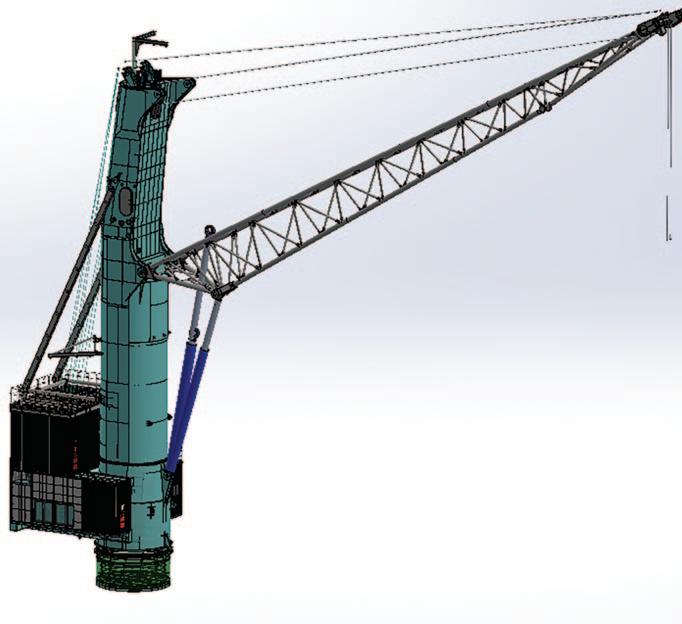
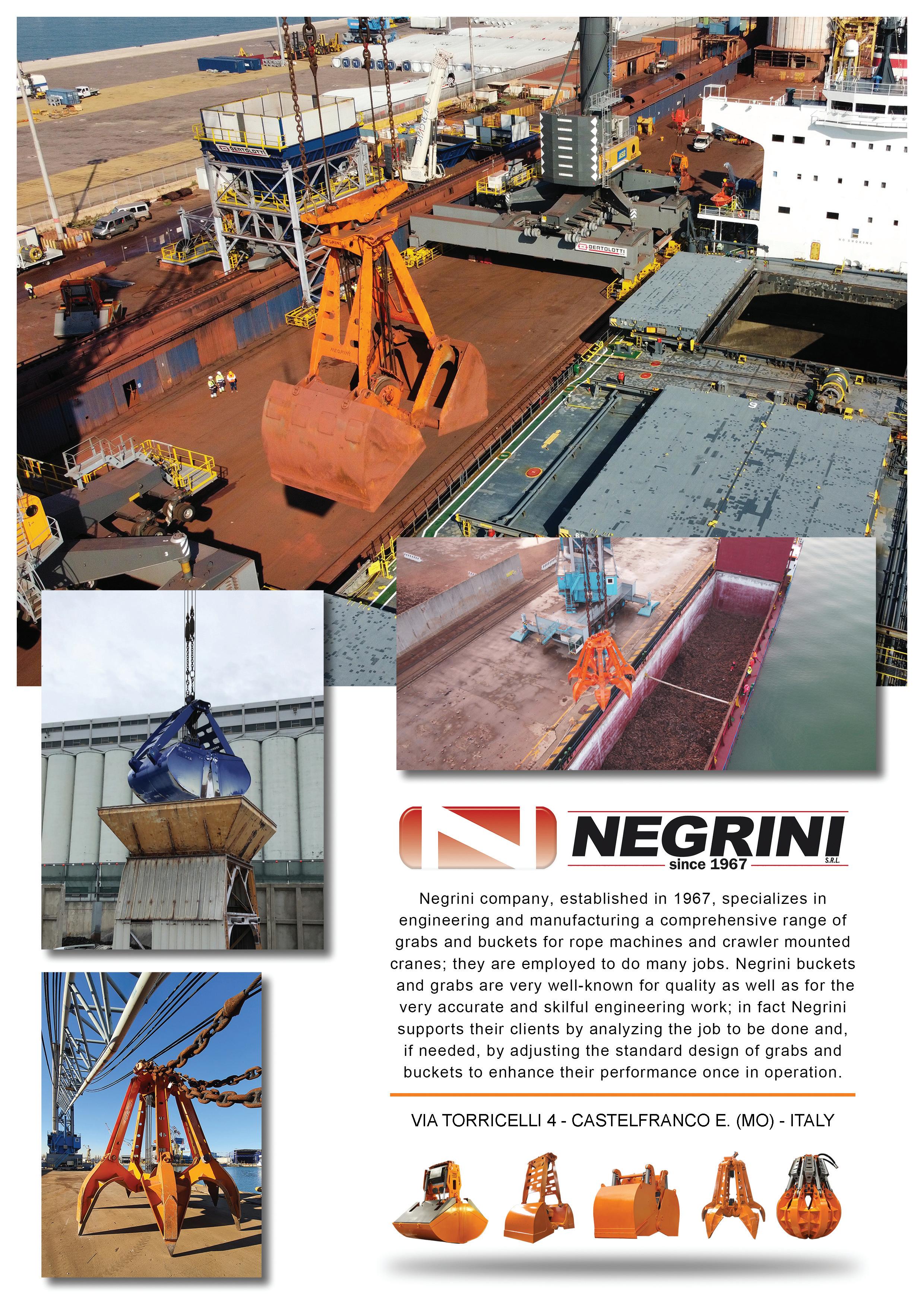
The Gantry Slewing Crane is mainly installed on floating docks and dredgers, mainly used for shipbuilding and maintenance, cargo handling and other operations at ports and wharfs, sheltered waters and other places.
GANTRY SLEWING CRANE FEATURES: able to travel on rails, with large v working area; optimal weight ratio lifting capacity; v modular design, flexible installation; v compact structure, centralized v installation, easy to inspect and maintain; strong resistance to wind; v advanced hydraulic and control v system; and stepless speed regulation, smooth v movement.
TRANSSHIPMENT CRANE
GENMA SECOND-GENERATION TRANSHIPMENT
CRANE – MODEL GHC100FE2
The GENMA barge crane can be used for loading and unloading operations between ships on shore or between ships.
The turntable of this machine has a low center of gravity, good stability, and flexible operation, making it an ideal loading and unloading equipment for coastal areas, along the Yangtze River, and in inland lakes.
GHC: Representing GENMA Mobile v Harbor Cranes
100: Representing the maximum lifting v capacity
F: Representing fixed type v
E: Representing electric motor drive v 2: Representing second-generation v products
ADVANTAGES AND HIGHLIGHTS:
CONVENIENCE OF MAINTENANCE :
The independent layout of the power v room, electrical room, and winch room takes into account both compact and simple internal layout as well as customer maintenance convenience; The parts of the entire machine that v require maintenance are designed with repair channels to access. Each organization is equipped with maintenance lifting lugs at its designated location for disassembly and maintenance purposes
DURABILITY:
The design of the structure meets the v high-intensity and frequent loading and unloading operations of the crane: the turntable adopts a composite beam structure design to achieve perfect stress distribution, the cylindrical tower has sufficient anti torsion performance, and the boom is welded with high-strength welded pipes, which is lightweight, has a small windward area, and has strong anti torsion ability; Strong applicability of the mechanism: v the lifting and slewing mechanism adopts a variable frequency speed regulation system with high control accuracy, which can meet the highprecision requirements for parameters such as speed and torque. At the same time, it also has the characteristics of fast response and good stability. The luffing mechanism is implemented through cylinders, and the hydraulic system controls smooth operation
Exploring transshipping with Aspec Engineering
Transhipping involves the loading of larger ocean-going vessels from smaller vessels or barges. This typically occurs in areas that are too shallow to accommodate large vessels at berth, enabling the transfer of raw materials such as grains, iron ore, and coal. By using smaller vessels to transport cargo to deeper waters where larger ships can anchor, transhipping optimizes shipping routes and ensures the efficient delivery of bulk materials.
This method enhances the reach of maritime logistics, allowing access to ports and regions that cannot directly accommodate large bulk carriers, thus with low impact force.
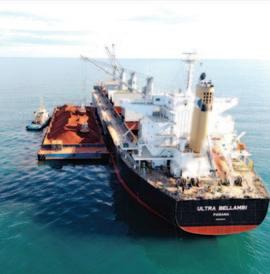
OPERATION STABILITY:
Wide range of power regulation: v Variable frequency speed regulation technology can achieve precise power regulation by adjusting output voltage, frequency and other parameters, enabling equipment to adapt to different loads, working conditions and other changes.
High control accuracy: the control v accuracy of the variable frequency speed regulation system is high, which can meet the high-precision requirements for parameters such as speed and torque, and also has the characteristics of fast response and good stability.
Low energy consumption: compared v to traditional constant speed regulation, variable frequency speed regulation technology can reduce the operating energy consumption of equipment by adjusting parameters such as load voltage and frequency, thereby achieving energy-saving goals. High operational control accuracy: the v S+B master controller is adopted, which has advanced fault detection and self diagnosis technology. The control cycle is short and the delay is low, ensuring timely and effective execution of instructions.
DUST ELIMINATION: facilitating global trade and supply chain flexibility.
The whole machine is equipped with a v dust collector, which blows positive pressure air into the indoor space of the machine room through the air duct, effectively reducing the entry of external dust into the room and creating possibilities for construction in locations with poor working conditions.
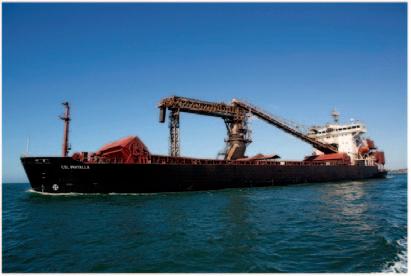
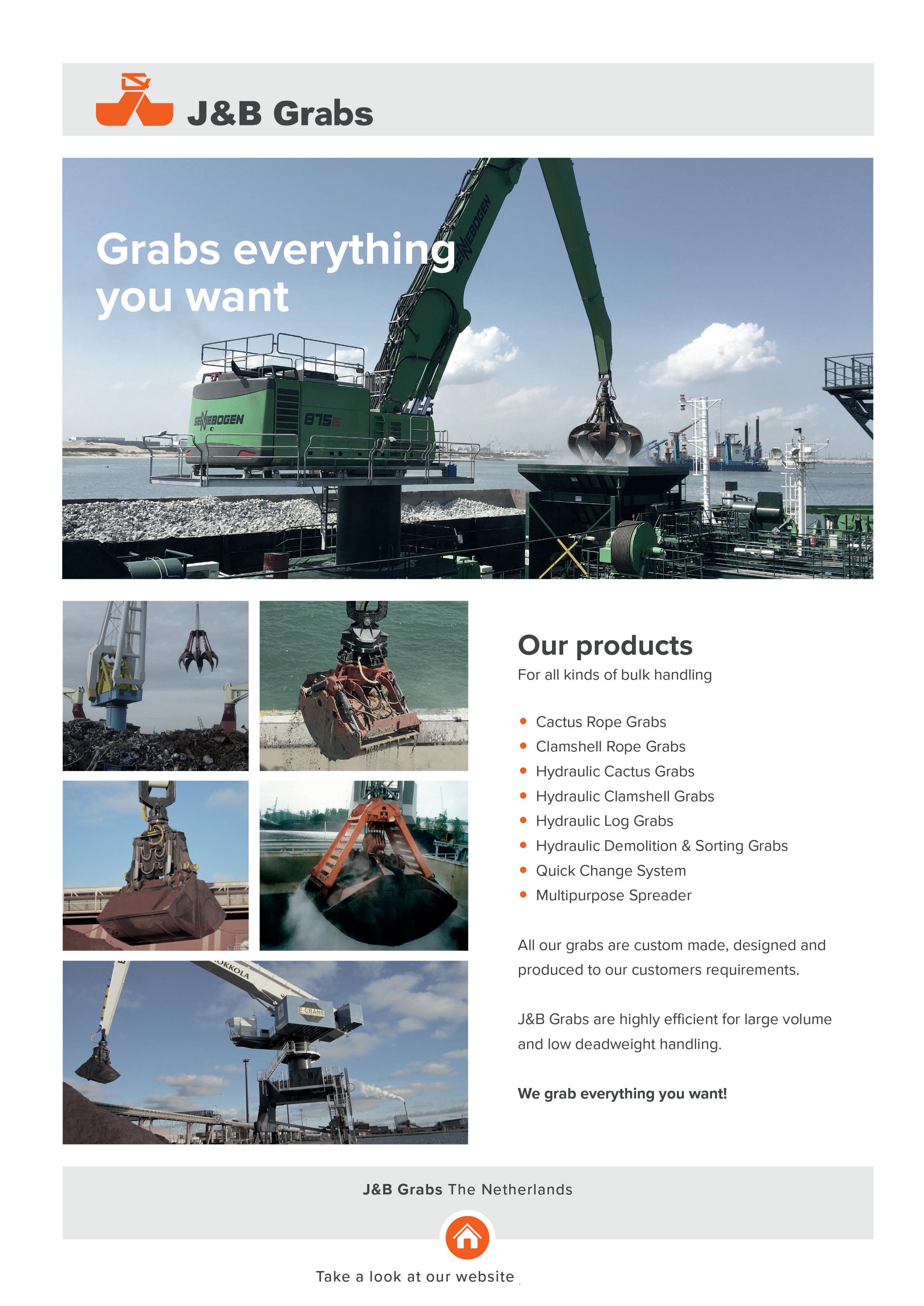
There are two main means of transhipping: dedicated transhipping vessels and geared vessels with tug assisted dumb barges. Dedicated transhipping vessels, such as the CSL Whyalla shown in Figure 2, are specialized ships designed to facilitate the transfer of bulk cargo onto larger ocean-going ships without the need for external equipment or port infrastructure. These vessels are equipped with unloading systems, including conveyor belts, cranes and sometimes shiploaders, enabling them to efficiently handle and transfer large quantities of bulk materials. There are a number of these vessels operating around Australia, Asia and Africa. These vessels typically have high unload rates (5,000–10,000tph [tonnes per hour]) making them efficient solutions.
The alternative option involves the use of dumb barges and geared vessels as shown in Figure 1. Typically, Handysize or Handymax vessels (30,000dwt to 50,000dwt) are ‘geared’ in that they are equipped with ships’ cranes. This feature is conducive to transshipment whereby the ships cranes can be used with a purpose designed grab system to carry out barge unloading/ transhipment. Barges are loaded at a loading facility and manoeuvred, either selfpropelled or with the assistance of tugs, to the geared vessel located in deeper water for unloading by the geared vessel. This is a less capital intensive option but comes with reduced loading rates (300–500dwt).
FACTORS INFLUENCING CAPACITY
There are many factors influencing the overall throughput capacity of a transhipping system including the following.
Gross Loading Rate (GLR): defined v as the average loading rate achieved from the time to load a ship from start to finish including the berthing and unberthing time (i.e. from when a ship arrives at the berth to when it departs).
Berth Occupancy Rate: defined as v the time that a berth is utilized, divided by the total available time. For a port, it is an indicator of congestion, which can reduce throughput. Typically, berth occupancy is between 50–75% (depending on cargo and number of berths), with higher berth occupancy rates indicating a more congested berth. PIANC WG 184 Design Principles for Dry Bulk Marine Terminal recommends a maximum berth commitment threshold of
75–85%. This corresponds to a berth occupancy of 60–70% once channel transit times and scheduled maintenance is accounted for. Figure 4 depicts the breakdown of calendar time for system.
Gross Loading Time: total time v spent by a ship between entry and departure.
Barge queuing effects: the ability of v the geared vessels to unload barges (i.e. two simultaneously vs in series) has a large impact overall capacity. High barge load rates are redundant if the unloading rates cannot keep up which can lead to high queuing times and a low load rate. These effects are illustrated in Figure 4 — both scenarios require three cycles of the first barge to complete the loading but the longer wait times of the single barge case results in a longer overall loading time. Weather: barges are more influenced v by weather delays compared to larger OGVs.
Calendar utilization of the shiploader/ v barge loader.
Advantages And Disadvantages Of Transhipping
Table 1 details some of the advantages and disadvantages of transhipping. By eliminating the need for extensive port infrastructure and reducing loading and unloading times, self-loading vessels enhance the efficiency and flexibility of bulk material transportation. This capability is particularly beneficial in remote or underdeveloped regions, where traditional port facilities may be lacking or in high-demand ports, where reducing berth time is crucial for maintaining throughput and reducing congestion.
Aspec Engineering Pty Ltd (ASPEC) is a multi-disciplinary engineering company in Australia that provides services to mining companies, ports, heavy industries and government organizations. The company’s focus is on extending asset life, reducing risk, increasing throughput and complex brownfield upgrades. The range of services provided by ASPEC is extensive, covering civil, marine, hydraulic, mechanical and structural engineering. This multidisciplinary approach allows the firm to offer comprehensive solutions tailored to the specific needs of its clients. ASPEC’s experience extends to emerging fields such as transshipping with projects in Cape York, Northern Territory, Pilbara and Indonesia.
